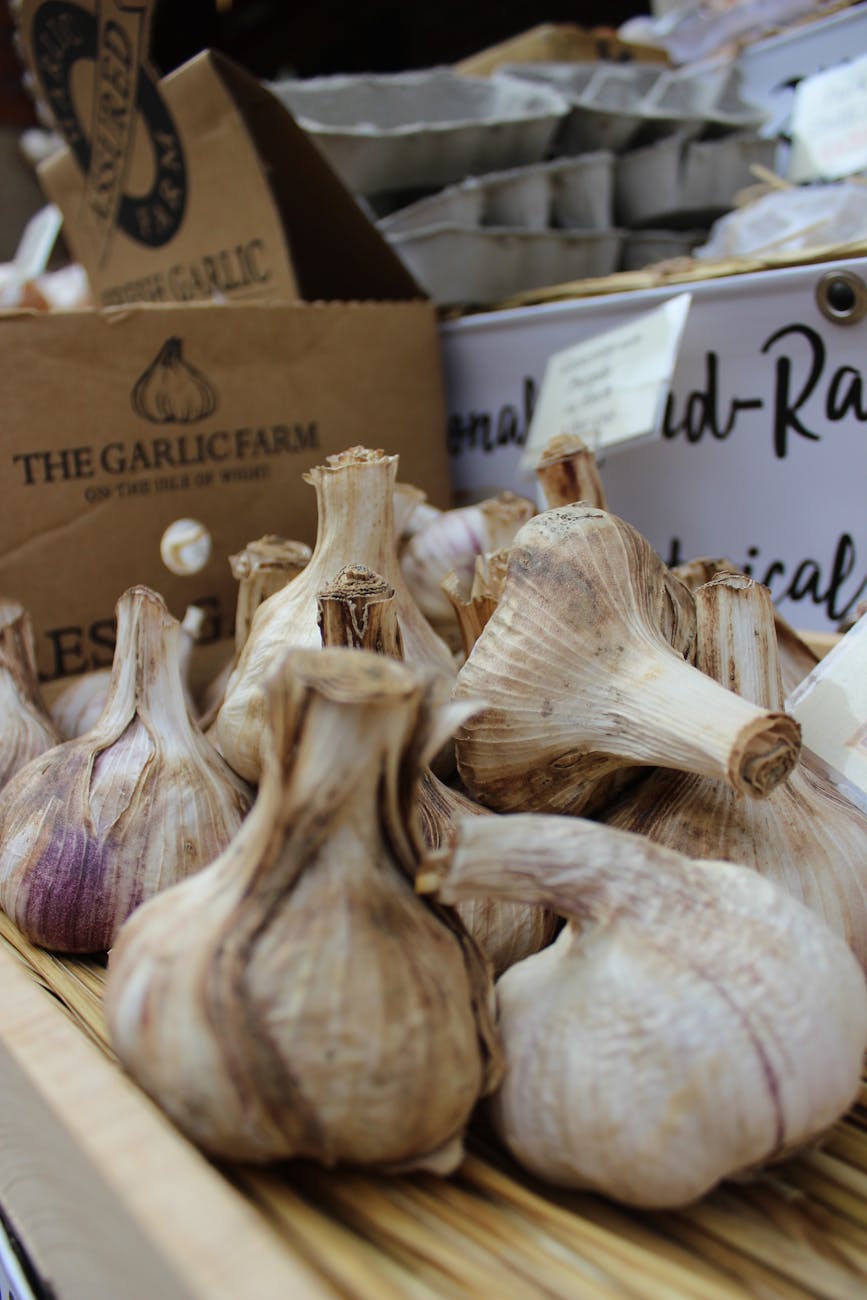Welcome to this hall on the Title: How to grow garlic – Steps for successful Garlic farming.
Discover how to grow garlic with this comprehensive step-by-step guide. From selecting the right variety to planting, caring, and harvesting, learn expert tips for successful garlic farming and enjoy flavorful homegrown garlic.
Introduction
Garlic (Allium sativum) is a widely used culinary herb known for its distinctive flavor and numerous health benefits. It is prized for its ability to enhance the taste of various dishes and has been recognized for its medicinal properties for centuries. Growing garlic can be a rewarding endeavor, whether for personal use or commercial production. In this hall, we will cover everything you need to know about growing garlic, from planting to harvesting.
What is Garlic?
Garlic is a bulbous plant belonging to the Allium family, which also includes onions, leeks, and chives. It is grown for its edible bulbs, which are composed of multiple cloves. Garlic has a strong aroma and flavor, often used fresh, dried, or powdered in cooking. Additionally, garlic is celebrated for its potential health benefits, including antibacterial properties, immune system support, and cardiovascular health.
See Also
- How to grow carrots, guide for sweet harvest
- How to grow apples, guide for healthy and productive apple trees
- How to grow pineapple – guide for pineapple farming
- Watermelon farming guide, best practices for high yield
- Cucumber Farming Guide for beginners.

Step-by-Step on how to grow Garlic: From Planting to Harvesting
1. Choosing the Right Garlic Variety: There are two main types of garlic: hardneck and softneck. Each has unique characteristics and growing requirements.
- Hardneck Garlic: Known for its strong flavor and complex aroma, hardneck garlic produces a flower stalk (scape) and is usually more cold-hardy. Varieties include Rocambole, Porcelain, and Purple Stripe.
- Softneck Garlic: This type has a milder flavor and is easier to braid. Softneck varieties include Artichoke and Silverskin, which are ideal for warmer climates and longer storage.
2. Site Selection: Garlic thrives in well-drained soil and full sunlight. Choose a site with good air circulation to reduce the risk of fungal diseases.
Steps
- Climate: Garlic prefers cool to moderate climates with a cold period (at least 4-8 weeks) to encourage bulb formation.
- Soil: Opt for loamy or sandy soil rich in organic matter with a pH between 6.0 and 7.0.
- Sunlight: Select a location that receives at least 6-8 hours of direct sunlight daily.
3. Preparing the Soil: Proper soil preparation is crucial for healthy garlic growth
- Soil Testing: Test the soil for nutrient levels and pH. Amend with lime if the soil is too acidic or sulfur if it’s too alkaline.
- Organic Matter: Incorporate compost or well-rotted manure into the soil to enhance fertility and drainage.
- Tilling: Till the soil to a depth of about 12 inches to break up compacted soil and improve aeration.
4. Planting Garlic: Garlic is typically planted in the fall or early spring, depending on the climate.
Steps for planting on how to grow garlic
- Clove Selection: Use healthy, disease-free garlic bulbs from a reputable source. Avoid using store-bought garlic, as it may be treated with growth inhibitors.
- Separation: Break the garlic bulbs into individual cloves, keeping the papery skins intact. Plant the largest cloves for better yields.
- Planting Depth: Plant cloves 2-4 inches deep, with the pointed end facing up. Space cloves about 6 inches apart in rows 12-18 inches apart.
5. Mulching and Watering: Mulching helps retain moisture and control weeds while providing insulation during colder months.
- Mulch Application: After planting, apply a 2-4 inch layer of organic mulch (straw, grass clippings, or shredded leaves) around the garlic.
- Watering: Water the garlic regularly, especially during dry spells. The soil should be kept moist but not soggy. Reduce watering as the garlic matures.
6. Fertilization and Nutrient Management: Garlic requires a balanced supply of nutrients for optimal growth.
- Fertilizer Application: In early spring, apply a balanced fertilizer (like 10-10-10) or organic options such as fish emulsion or compost tea. Follow the manufacturer’s recommendations for application rates.
- Top-Dressing: A side-dressing of compost or organic fertilizer in mid-spring can provide additional nutrients as the plants grow.
7. Weed Control: Weeds can compete with garlic for nutrients and water, so it’s essential to manage them effectively.
Steps for weed control in how to grow garlic
- Mulching: The initial layer of mulch helps suppress weed growth.
- Hand Weeding: Regularly check for and remove weeds by hand to avoid disturbing the garlic roots.
- Hoeing: Use a hoe to manage larger weed populations while being careful not to damage the garlic plants.
8. Pest and Disease Management: Garlic is generally resistant to pests and diseases, but issues can still arise.
- Common Pests: Watch for pests like aphids, thrips, and bulb mites. Use insecticidal soap or neem oil for control.
- Fungal Diseases: Fungal issues such as white rot or downy mildew can occur. Ensure proper drainage and avoid overhead watering to reduce humidity.
- Sanitation: Practice crop rotation and remove any diseased plants or debris to prevent disease spread.
9. Harvesting Garlic: Garlic is typically ready for harvest in mid to late summer, depending on the planting time and variety.
Steps to take in harvesting garlic
- Ripeness Check: Harvest when the lower leaves start to turn brown while the upper leaves are still green. This usually occurs when 30-50% of the leaves have turned yellow.
- Harvesting Method: Use a garden fork or shovel to gently lift the bulbs from the soil, taking care not to damage them. Brush off excess soil but avoid washing them until ready for storage.
- Curing: Cure garlic by hanging the bulbs in a cool, dry, well-ventilated area for 2-4 weeks until the skins are dry and papery.
10. Storing Garlic: Proper storage extends the shelf life of garlic and maintains its quality.
Steps for storing garlic
- Storage Conditions: Store cured garlic in a cool, dark place with low humidity. Ideal storage conditions are around 60°F (15°C).
- Container Options: Use breathable containers like mesh bags or baskets. Avoid storing garlic in plastic bags, which can trap moisture and promote rot.
Conclusion On How To Grow Garlic
Growing garlic is a simple yet rewarding process that can yield delicious and healthy results. By following these steps—from selecting the right variety and preparing the soil to proper watering, fertilizing, and harvesting—you can cultivate healthy garlic plants in your garden. Whether you’re growing garlic for personal use or commercial production, this guide will help you achieve a successful garlic harvest. Enjoy the fruits of your labour and the flavors that garlic brings to your culinary creations!
